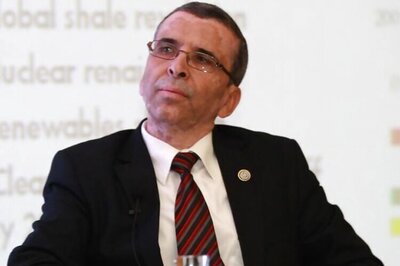
views
Washington: The amount of time between heartbeats can vary even at a "constant" heart rate - and this variability is a good thing, say scientists. Reduced heart rate variability (HRV) has been found to be predictive of a number of illnesses, such as congestive heart failure and inflammation. For athletes, a drop in HRV has also been linked to fatigue and overtraining.
However, the underlying physiological mechanisms that control HRV - and exactly why this variation is important for good health - are still a mystery.
By combining heart rate data from athletes with a branch of mathematics called control theory, a collaborative team of physicians and Caltech researchers from the Division of Engineering and Applied Sciences have now devised a way to better understand the relationship between HRV and health.
The findings could allow for better monitoring technologies for athletes and medical professionals, researchers said. In order for a body to work optimally, it must operate in an environment of stability called homeostasis.
When the body experiences stress - for example, from exercise or extreme temperatures - it can maintain a stable blood pressure and constant body temperature in part by dialing the heart rate up or down.
HRV plays an important role in maintaining this balance,said study author John Doyle, the Jean-Lou Chameau Professor of Control and Dynamical Systems, Electrical Engineering, and Bioengineering.
Researchers measured the heart rate, respiration rate, oxygen consumption, and carbon dioxide generation of five healthy young athletes as they completed experimental exercise routines on stationary bicycles.
By combining the data from these experiments with standard models of the physiological control mechanisms in the human body, the researchers were able to determine the essential tradeoffs that are necessary for athletes to produce enough power to maintain an exercise workload while also maintaining the internal homeostasis of their vital signs.
"For example, the heart, lungs, and circulation must deliver sufficient oxygenated blood to the muscles and other organs while not raising blood pressure so much as to damage the brain," Doyle said.
"This is done in concert with control of blood vessel dilation in the muscles and brain, and control of breathing. "As the physical demands of the exercise change, the muscles must produce fluctuating power outputs, and the heart, blood vessels, and lungs must then respond to keep blood pressure and oxygenation within narrow ranges," Doyle said.
Once these trade-offs were defined, the researchers then used control theory to analyse the exercise data and found that a healthy heart must maintain certain patterns of variability during exercise to keep this complicated system in balance. The work was published in the Proceedings of the National Academy of Sciences.


















Comments
0 comment